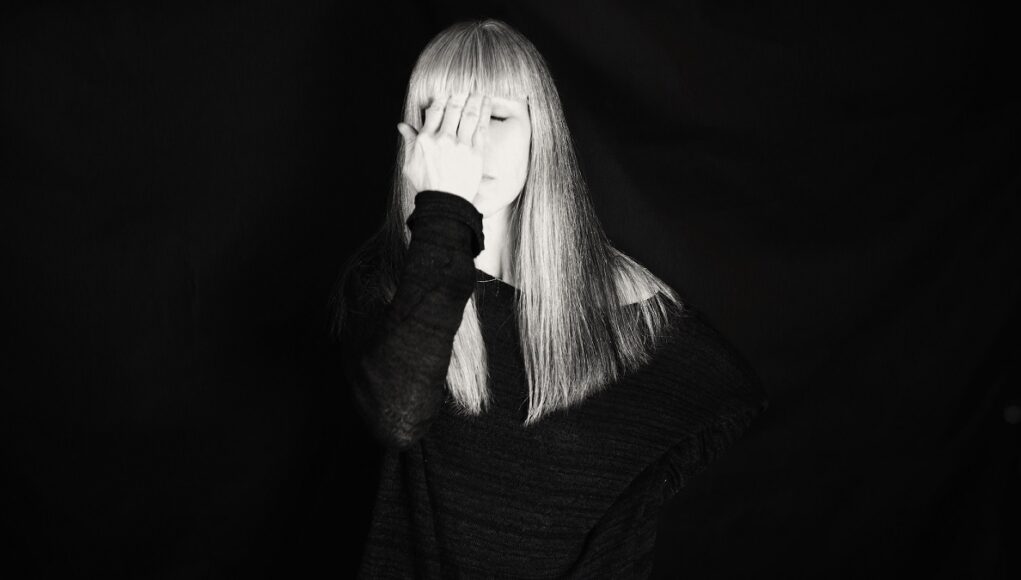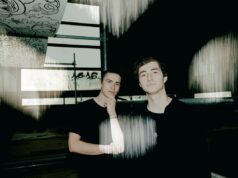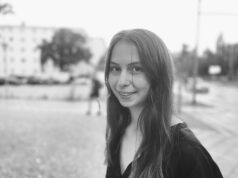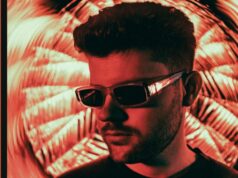Can you tell us about your background and how you got started in music?
I was born and raised in Toronto, Ontario so I started out in the underground electronic music scene in TO as a DJ and producer, and then I moved to Vancouver and I continued in the underground scene. Looking back, I think my early influences were diverse in electronic music, I was exposed to top DJ’s in techno, drum and bass, house and I value the diverse electronic music I got to hear in my early years before I started to DJ. I got to hear the latest underground music from New York, Detroit, UK & Chicago so my early influences are rooted from those areas. In those days I was always front and centre watching the DJ’s and wanting to learn how they worked. I then bought myself 1200’s and a mixer and taught myself how to beat match. I played my first show after a year of practising in my basement at my parent’s place! I then got to play out quite quickly, I DJ’d drum and bass when I started out in Toronto and then I started producing drum and bass with a bunch of releases. When I moved to Vancouver I was influenced by the surrounding nature and so I started exploring the 4×4 sounds, then started DJ’ing and releasing techno. I think my music is reflective of my early influences and probably have contributed to my distinctive sound that’s derived from these experiences and various genres.
Who are your biggest musical influences? How have these influences shaped your sound and approach to making music?
I have so many influences I’ve listed a bunch below, each of these artists have shaped my sound in a certain way.
Mr Oizo – “Flat Beat”
Richie Hawtin
Fracture
Brian Eno – “Apollo” album
Thomas Bangalter – in his “Roule” days
Omni Trio
Fjaak
Dax J
Steve Pointdexter – his “Work that Mutha fker” track
Jon Hopkins
Ed Rush & Optical
Frankie Knuckles
Ellen Allien
Josh Wink – his “Higher State of Consciousness” track
Ray Keith
Each of these artists either by one track from their works or their entire body of works have helped my sound build into what it is today. Some may have influenced how I approach my percussion, others may have influenced how I approach atmospherics while others are just all around influential in my work.
What has been the highlight of your career so far?
I think the biggest highlight was the release of my “The Pretty Lights” EP. It was reviewed in Resident Advisor and Mixmag and played on big stages like the Drumcode stage at Tomorrowland. It was a huge eye opener for me that my music could resonate with so many people. It was a big release for me. Another highlight was my last EP “Release The Ghosts”, it hit two number 1’s on Beatport in the techno charts. That was so humbling to experience. It’s hard sometimes because you think you are in a vacuum when you make your tracks and when they get out there and these unexpected things happen, you realize that they are no longer yours, they belong to the universe and if they resonate in that moment, I am grateful.
How do you handle music requests? And what do you do when the equipment goes on strike?
I don’t have to deal with requests usually because there’s people around me or a rail is up so my area isn’t accessible to those who want to yell tracks at you. You can’t hear them anyway, so it’s super awkward.
As for technology failing, that’s the number one thing you can count on when you DJ, it always fails at some point. The tricks you learn in the moment to ensure the dance floor doesn’t know of your technological difficulties is key. I learned how to DJ with my ears as my tool so my reliance on the technology is pretty minimal. Unless you lose power, then well, you’re in it together!
Can you explain your creative process when writing and recording a new song?
My creative process when writing a new track is similar to how a singer/songwriter would approach a song because I usually start with lyrics that I’ve written. I’m always writing lyrics and I iterate on lyrics in my head for a while until I’m ready to write. My lyrics stem from my experiences and once I start writing I essentially write a song in chorus/verse format and then I remix myself into a dance floor format, the lyrics either get deleted or are more succinct into one or two words or at most a few sentences.
When I began the process on the track “Wild” on my latest EP, I came up with the idea to use the lyrics as words that are being said to me and then the music is the response to those words, the protest, the music protesting the statement. Like the music is the fight, squashing the words, in a rebel punk rock kind of way. I recorded the lyrics “Why Can’t You Be A Quiet Girl” over a simple drum pattern that I wrote, then I fleshed the drums out and added percussion. Typically, I write about 16bars of drums then I build the structure of the entire track from the 16bars. Once I have the drum structure and rough vocals in, then I write the sound design and for this one the acid line. I wanted the 303 to be like an angst guitar, the punk, the fight, so I worked at it until I felt it raged. I think at some point I had a half time drum sequence in the vocal parts, but then I decided to just keep it moving in the 4×4, but I kept it minimal. Once I have the tracks structure and all the elements in place. Then I reprocess elements through outboard gear and start mixing, polishing, and reprocessing more until I have a track. I hope people get that the lyrics in “Wild” aren’t telling people to be quiet, but it’s instead a call to action to be authentic, a song of encouragement to be loud, to be strong, to share your voice unapologetically.
Can you tell us a bit about your latest Wild EP release? How did you go about developing it and how do you think it differs from your previous work?
My new EP “Wild” is my second EP with Basse-Cour, my first EP with them was “Release the Ghosts”. I think these two EP’s are similar in tone and style. They are both moodier, heavier, darker, I’ve tapped into feelings and themes that I haven’t been able to do in my past works.
The first track on my new EP “Wild” is “The Implosive”. The creative process behind this one is that its a direct reflection of my personal experience going through an 90km wind storm, in the track I explore the feeling of the barometric pressure that I experienced during the storm. I tried to emulate the feeling of mounting pressure that keeps building and building and then it implodes and releases. Typically I try not to have a vocal that says what I’m musically trying to say, but in this case I think it worked. So the vocal moves around in pitch and repeats “the pressure” to reinforce the movement of pressure and the musical build of the pressure. The acid builds with the vocals and then it releases into a giant bass drop into a minimal vocal and dark rolling acid track. I reprocessed the vocal in Kyma for the pitching and then through my Eventide H3000 to make it sound like it has its own space. I also reprocessed my TB-303 through different distortion pedals for each section to give it a different sound for each. The intro is halftime, which isn’t typically done in techno, but I love the halftime autonomic sound and so I thought it would be an interesting way to build the pressure. The creative process of the second track “Wild” we already chatted about earlier, but I think they’re both heavy and moody in tone.
What themes or ideas do you keep returning to in your work?
The most common thread through my tracks I think is the idea of putting opposite themes or sounds together. Soft, yet hard. Dark, yet light. I like to play with the idea of Yin/Yang. In “Wild” for example, that track has a vocal that is a statement and then an opposing reaction to the statement, as a musical response. I like these juxtapositions pairing with hard untethered, repetitive beats to drive it. But my main goal in all of my music is to keep connected to what I’m writing and add different elements of emotion to develop a theme and then I flip it with contrast to evoke another emotion or element of surprise, I like to play with opposing ideas.
Are there any new directions or sounds you’re exploring in your music right now?
I’m writing an old school dnb track right now. I haven’t written one in about five years, but this one is slow enough that it can mix with techno, so it’s gonna be fun to produce and put in sets!
What advice would you give to make it as a professional?
I wish somebody told me this repeatedly when I started out, but to me, there is no expiry date on being an artist. People will often instead tell you to quit and they’ll say “when are you going to grow up and leave music behind” they will say this to you no matter what age you are whether you’re 25 or 35 etc. So my advice is to tell yourself that just because it doesn’t align with their core values of what their lives are, doesn’t mean it should align with yours. Live a long life as a musician for as long as you can. You don’t have to do art full time to have a legitimate life as an artist, so keep working hard at what you love to do and you will probably have a really fruitful enjoyable life full of passion.

https://www.facebook.com/Queensyze
https://www.instagram.com/queensyze
WILD
LABEL: BASSE-COUR
FORMAT(S): DIGITAL
RELEASED: 03.05.24
Following the success of their latest collaboration, Queensyze returns to Basse-Cour with two tracks of raw, emotional, acid-flecked industrial techno.
Queensyze is a Canadian electronic music producer, composer, storyteller and filmmaker, described by iDJ Mag as “Canada’s fastest-rising techno star”. She released her debut techno EP, “The Pretty Lights” in 2019 which was supported by taste maker media like Resident Advisor and Mixmag, and it broke into the coveted top ten techno chart on Beatport. Since her breakout EP she’s released “Smells Like ACiiD, “Stay Up With You” and her last EP “Release the Ghosts“ hit two #1’s on the Techno Peak Time Driving and Techno Raw Deep charts on Beatport.
Her sound is personal and reflective, it focuses on the idea of being subversive while also laying it down with raw emotion and untethered beats to keep a dancefloor moving. Her music is visceral and hypnotic, hard and raw, yet elegant and detailed.
Her latest two-track EP, Wild, continues that trend. Landing again on Basse-Cour, both tracks brim with raw, untempered emotion, blending elements of acid, dub and mainroom techno into visceral club workouts that leave a lasting impression.
——————————
QUEENSYZE – WILD
- THE IMPLOSIVE
- WILD
——————————








